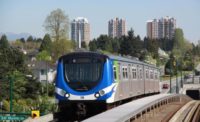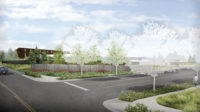A design contract for seismic retrofit of the 2,000-ft-long George Massey tunnel under the Fraser River near Vancouver, British Columbia, is slated to go out later this year. The $26-million upgrade will be among Vancouvers most crucial.
The 45-year-old, four-lane tunnel is made up of six 1,150-ft-long precast sections, each 23 ft high and 75 ft wide, sunk into a trench and underlain by almost 2,000 ft of loose saturated sediments. It is a designated lifeline structure on Vancouvers Disaster Response Route, a network of land and water routes that will be open only to emergency vehicles after a disaster. Every DRR-designated route has been or will be upgraded.
"The George Massey upgrade is the most costly and technically challenging of all the retrofits," says Allan Galambos, manager of bridge and structural engineering for the South Coast region of British Columbias Ministry of Transportation. After the $13.8-million, 18-month structural upgrade is completed in 2006, another $13 million is expected for geotechnical reinforcements.
The tunnel needs reinforcing to enable it to handle relative seismic movement. The upgrade is to ensure that there would be many well-distributed cracks as opposed to a few large ones. The challenge will be in finding spaces to add reinforcing steel. "Trucks already scrape the ceiling so we can only reinforce the corners on the ceiling, the floor and the walls," says Peter Taylor of Buckland & Taylor Ltd., North Vancouver, project seismic consultant. "We will place a lot of steel in the wind tubes as well."
The concrete-covered tunnel section joints, welded together with embedded rebar, will be reinforced with 8.2-ft-long steel plates. Then, the plan is to densify a 50-ft-wide area along both river sides up to 45 ft below the mudline with stone columns or timber piles. Grid spacing will be refined during construction, as the riverbed is not flat and scour holes could cause lateral spreading during densification, which in turn could cause the tunnel to shift. Engineers will monitor the project to prevent such movements.



Post a comment to this article
Report Abusive Comment